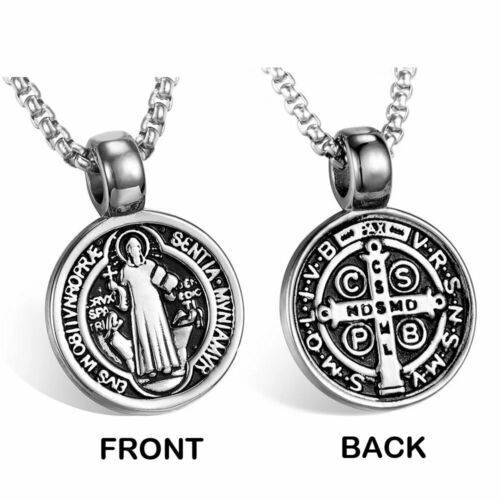-40%
Holy Card of Saint Teresa de Jesus de Avila Plus a 1" Medal of Teresa of Avila
$ 2.5
- Description
- Size Guide
Description
Laminated Holy Card of Saint Teresa de Jesus de Avila Plus a 1" Silver Oxidized Medal of Teresa of AvilaSt Theresa of Avila silver oxidized medal. Made in Italy, 1" inch tall, jump ring is included. Patron Saint of Headaches.
Teresa of Ávila, born Teresa Sánchez de Cepeda y Ahumada, also called Saint Teresa of Jesus, was a Spanish noblewoman who felt called to convent life in the Catholic Church. A Carmelite nun, prominent Spanish mystic, religious reformer, author, theologian of the contemplative life and of mental prayer, she earned the rare distinction of being declared a Doctor of the Church, but not until over four centuries after her death. Active during the Catholic Reformation, she reformed the Carmelite Orders of both women and men. The movement she initiated was later joined by the younger Spanish Carmelite friar and mystic, John of the Cross. It led eventually to the establishment of the Discalced Carmelites. A formal papal decree adopting the split from the old order was issued in 1580.
Teresa, who had been a social celebrity in her home province, was dogged by early family losses and ill health. In her mature years, she became the central figure of a movement of spiritual and monastic renewal borne out of an inner conviction and honed by ascetic practice. She was also at the center of deep ecclesiastical controversy as she took on the pervasive laxity in her order against the background of the Protestant reformation sweeping over Europe and the Spanish Inquisition asserting church discipline in her home country. The consequences were to last well beyond her life. One papal legate described her as a "restless wanderer, disobedient, and stubborn femina who, under the title of devotion, invented bad doctrines, moving outside the cloister against the rules of the Council of Trent and her prelates; teaching as a master against Saint Paul's orders that women should not teach."
Her written contributions, which include her autobiography, The Life of Teresa of Jesus and her seminal work The Interior Castle, are today an integral part of Spanish Renaissance literature. Together with The Way of Perfection, her works form part of the literary canon of Christian mysticism and Christian meditation practice, and continue to attract interest from people both within and outside the Catholic Church.
Other associations with Teresa beyond her writings continue to exert a wide influence. A Santero image of the Immaculate Conception of El Viejo, said to have been sent by her with a brother emigrating to Peru, was canonically crowned by Pope John Paul II on December 28, 1989 at the Shrine of El Viejo in Nicaragua. Another Catholic tradition holds that Saint Teresa is personally associated with devotion to the Infant Jesus of Prague, a statue she may have owned. Since her death, her reputation has grown, leading to multiple portrayals. She continues to be widely noted as an inspiration to philosophers, theologians, historians, neurologists, fiction writers and artists, as well as to countless ordinary people interested in Christian spirituality and mysticism.
Forty years after her death, in 1622, Teresa was canonized by Pope Gregory XV. At the time she was considered a candidate for national patron saint of Spain, but this designation was awarded to St. James the Apostle. She has since become one of the patron saints of Spain. However, not until 27 September 1970 did Pope Paul VI proclaim Teresa the first female Doctor of the Church in recognition of her centuries-long spiritual legacy to Catholicism.












